#but things like buying clothes from fair trade brands
Explore tagged Tumblr posts
Text
actually i AM gonna talk abt dan's fashion expenses outside of tags fuck it and im gonna be 100% forreal about this and idc if the bants about his $300 pants are mostly jokes
yall know about what happens with fast fashion right. it's all cheaply made by people trapped in sweatshops and factories all day for little to no pay, and when a fashion cycle or season is over, all of the unsold clothes get dumped onto the shores of a country that has been cast as lesser by societies that continue to benefit from colonization and slavery despite acting like we're somehow above it. and of course thats not even accounting for clothes that end up in trash landfills, just all this fuckin waste that goes into letting a t shirt be $15USD.
and like okay. no, dan buying $300 parachute pants isn't singlehandedly saving the world, and no, phil buying $10 graphic tees isn't singlehandedly killing it. but still it bugs me AND I KNOW ITS A JOKE HAHA SO FUNNY BUT LIKE IT BUGS MEEEE when ppl are like "xD dan howell participating in capitalism by buying expensive clothes" when its like, ok he's buying from brands that nobody's heard of, who probably make clothes by order, and tbf i'm not 100% confident that the working conditions of the people who made dan's $300 pants are all super safe and sound and all of the workers are well-paid, but they're at the very least being paid. being paid more than a USD cent. and you're probably not going to see thousands of parachute pants piling up on a madagascan beach.
#myrambles#this is something thats bothered me for fucking ever like whatever his taste in fashion is silly sometimes#but frankly as a person who is privileged to have money to buy clothes from companies that pay their workers better#that is unironically dan being responsible with his money#bc yeah most of us have no choice but to buy fast fashion bc its all we can afford#but things like buying clothes from fair trade brands#OR thrifting or NOT BUYING NEW CLOTHES AT ALL CUZ U DONT NEED ANY#(which both of those are way better so im not like fully giving dan credit or something im just saying)#like theyre little things that will add up its not gonna change the world overnight but it adds up#something something the whole point of we're all doomed etc#idk sometimes ppl got me turning into a dannie just cuz im like i gotta defend bro
28 notes
·
View notes
Note
how can i avoid/find alternatives to products that use child labour?
so I'll preface this with the fact that there's no ethical consumption under capitalism. it's great that you want to not use products that were made with child labor, and I feel the same way. however, there will be some times when that is not a feasible option, and when that happens you gotta remember that you're doing what you can and the blame is on the shoulders of the corporate for allowing it.
aside from that, here are my recommendations, by topic:
CLOTHES: -thrift stores are your friend. reduces waste and reuses products. you also avoid giving money to the shitty companies employing child labor. -fair trade is good if you have the means. fair trade clothes can be expensive tho, so don't beat yourself up if it's not affordable for you. -share clothes with your friends/roommates/partners/family members if they have the same body shape/style as you! just make sure you wash the clothes in some way between people. -check third-party sources brand by brand. some brands make a commitment to avoiding suppliers that use unethical labor practices. don't take their word for it bc sometimes the companies lie, but see what other people/sources are saying.
ELECTRONICS: -don't upgrade until you have to. the sad thing about electronics is that almost all major tech hardware companies source their raw materials from areas that don't have good labor protections (because it's cheap). in this day and age, especially in developed countries, it's very hard to survive without some kind of functional device. so my advice is to buy a device and then use it until it breaks/can't function anymore. this seems like common sense but I've known an astounding amount of people who buy new shit every other year just because they can.
FOOD: -fair trade applies here too, although the expense caveat is still very present. -some brands don't have a fair trade label but are proven to be ethically sourced. just do your research and don't take the company's word for it. -try to eat local, especially for fresh foods. although this too can be expensive so don't beat yourself up if it's not an option -for the love of fuck don't buy nestle products (they've done all kinds of unethical shit). -not purely child labor related but for the love of fuck don't eat at chick fil a. yes most companies do horrible things but chick fil a is particularly blatant about it.
OTHER/TIPS: -learn some diy tricks! learn how to mend clothes, make your own decorations, fix various things that break. the less you buy, the less money shitty places get. -see if your community has a co-op shop or an item exchange program or some other kind of mutual aid based place to get things. these aren't super common but they do exist especially if you're in an area with a strong leftist bent. -buy from amazon as little as possible because amazon treats their workers terribly and monopolizes shit and drives up prices and is all around bad news. -stand in solidarity with workers both in your country and outside of it. take a strong political stance against worker exploitation, child or otherwise.
hope this is helpful!
#pigeon.txt#asks#anon#politics#anticapitalism#solidarity#ethics#feel free to add on with your info/experiences!
29 notes
·
View notes
Text
Why UK Shoppers Love Sustainable Sarees?
Sustainable fashion is taking the UK by storm, and shoppers are more eco-conscious than ever before. From clothing made with organic materials to brands committed to fair labor practices, UK consumers are making smarter, greener choices. This growing trend has even reached traditional garments like sarees, which are now becoming a popular fashion choice online in the UK.
Sarees, originally from South Asia, have been worn for centuries as a symbol of cultural heritage. Today, they have become a part of the UK fashion scene, blending tradition with modern style. With more people buying sarees online UK, the demand for eco-friendly, sustainable options is also growing.
Eco-friendly sarees, made from organic or recycled fabrics, are gaining popularity for their environmental benefits and unique designs. UK shoppers love these sustainable sarees because they offer a stylish way to be kind to the planet while honoring traditional fashion.
What Are Sustainable Sarees?
A sustainable saree is a saree made with care for the environment and people. These sarees use eco-friendly fabrics, meaning the materials are grown or made in ways that don't harm the planet. For example, organic cotton is grown without harmful chemicals, Tencel is made from wood pulp in an eco-friendly way, and bamboo silk is created from bamboo plants, which grow quickly and don’t need much water. Some sustainable sarees even use recycled fabrics, giving old materials new life.
But it’s not just about the fabrics. Sustainable sarees are also made through ethical production, which means the people who make them are paid fairly and work in safe conditions. Many of these sarees are produced by companies that follow fair trade practices, ensuring that workers are treated well and the production process respects the environment.
In the UK, sustainability in fashion is becoming more important. People are looking for clothes that are stylish but also good for the planet. Sustainable sarees offer a beautiful, eco-friendly option for shoppers who want to make a positive impact while still looking fashionable. With more options for buying sustainable sarees online UK, it's easier than ever to join the movement for greener fashion.
The Appeal of Sustainable Sarees for UK Shoppers
A. Eco-Consciousness
UK shoppers are becoming more aware of environmental issues, and this has changed how they shop for clothes. Many people now want to reduce fashion waste and lower their carbon footprint. Sustainable sarees, made from eco-friendly materials like organic cotton or bamboo silk, help shoppers make greener choices. By choosing sustainable sarees online UK, they support brands that care about the environment, making it easy to look good while doing good for the planet.
B. Ethical Fashion
Fast fashion often comes with hidden costs, like poor working conditions and unfair wages for factory workers. UK shoppers are now more concerned about these issues. Sustainable saree brands focus on ethical fashion, meaning they pay their workers fairly and provide safe working conditions. When shoppers buy sarees from these brands, they can feel good knowing their money supports better practices and helps improve the lives of workers.
C. Unique and Handmade Appeal
One thing that makes sustainable sarees stand out is that many are handcrafted and come in limited editions. This makes each saree special and unique, unlike mass-produced clothing. UK shoppers appreciate this craftsmanship, valuing the time and skill that go into creating each saree. Plus, sustainable sarees often carry a sense of cultural heritage, making them even more meaningful to own and wear.
D. Modern Styles with a Traditional Twist
Sustainable sarees beautifully blend traditional designs with modern fashion, making them perfect for UK shoppers who want the best of both worlds. Whether it’s a formal event, a wedding, or a cultural celebration, these sarees are versatile enough to be worn anywhere. They allow shoppers to honor traditional fashion while still looking stylish in modern settings, adding a unique touch to their wardrobe.
By choosing sustainable sarees online UK, shoppers not only embrace eco-friendly fashion but also enjoy beautiful, ethical, and stylish options for every occasion.
Top UK Brands Offering Sustainable Sarees
A. Overview of Brands
Suta Suta is a popular brand that offers sustainable sarees made from organic cotton and handwoven by skilled artisans. Their sarees are known for being soft, comfortable, and eco-friendly. Suta focuses on reviving traditional weaving techniques while keeping their sarees stylish and affordable for UK shoppers.
Ethnic Weaves UK Ethnic Weaves UK specializes in eco-friendly sarees crafted from organic silk and cotton. Their sarees are ethically sourced, supporting local artisans in South Asia. Each saree is unique, making it perfect for shoppers who want to stand out with a blend of tradition and sustainability.
Mayamiko Mayamiko offers sarees made from recycled and upcycled materials. This brand is all about ethical fashion and fair trade, ensuring that every saree is crafted with care for both people and the planet. Their designs mix modern style with traditional patterns, perfect for UK shoppers looking for something special.
House of Bilimoria House of Bilimoria is a UK-based brand that focuses on sustainable, bespoke sarees. Using natural fabrics and zero-waste production methods, they offer beautiful, custom-made sarees. The brand is perfect for those who want a one-of-a-kind piece that’s both eco-conscious and stylish.
B. Online Platforms
UK shoppers can easily find sustainable sarees online through various platforms. Websites like Etsy, Wolf & Badger, and Ethical Superstore feature a range of eco-friendly fashion options, including handcrafted sarees from ethical brands. Many of these platforms are dedicated to supporting sustainability, making it easier for customers to discover and shop for sustainable sarees online UK.
These brands and platforms make it simple for UK shoppers to find eco-friendly, beautiful sarees that align with their values of sustainability and style.
Benefits of Choosing Sustainable Sarees
A. Environmentally Friendly
Sustainable sarees are made with the environment in mind. Unlike fast fashion, which often harms the planet with chemicals, waste, and pollution, sustainable sarees use eco-friendly materials like organic cotton or recycled fabrics. This means fewer harmful chemicals are released into the air and water. Plus, sustainable sarees are produced in ways that create less waste. By choosing sustainable sarees online UK, shoppers can help protect the environment and reduce the negative impact of fashion.
B. Long-lasting Quality
Sustainable sarees are not only good for the planet, but they are also built to last. These sarees are made with high-quality materials and craftsmanship, so they don't wear out as quickly as cheap, mass-produced clothes. This means you can wear them again and again without worrying about them falling apart. Even though they might cost a little more upfront, sustainable sarees are a great investment because they last longer, saving money in the long run.
C. Supporting Small and Ethical Businesses
Many sustainable saree brands are small businesses run by artisans and ethical producers. When you buy a sustainable saree, you're not just getting a beautiful piece of clothing; you're also helping support these small businesses. UK shoppers love knowing their money goes to companies that treat their workers fairly and use ethical practices. By shopping for sustainable sarees online UK, you can make a positive impact on both the environment and people.
Choosing sustainable sarees means making smart choices for yourself, the planet, and the community.
Benefits of Choosing Sustainable Sarees
A. Environmentally Friendly
Sustainable sarees are made with the environment in mind. Unlike fast fashion, which often harms the planet with chemicals, waste, and pollution, sustainable sarees use eco-friendly materials like organic cotton or recycled fabrics. This means fewer harmful chemicals are released into the air and water. Plus, sustainable sarees are produced in ways that create less waste. By choosing sustainable sarees online UK, shoppers can help protect the environment and reduce the negative impact of fashion.
B. Long-lasting Quality
Sustainable sarees are not only good for the planet, but they are also built to last. These sarees are made with high-quality materials and craftsmanship, so they don't wear out as quickly as cheap, mass-produced clothes. This means you can wear them again and again without worrying about them falling apart. Even though they might cost a little more upfront, sustainable sarees are a great investment because they last longer, saving money in the long run.
C. Supporting Small and Ethical Businesses
Many sustainable saree brands are small businesses run by artisans and ethical producers. When you buy a sustainable saree, you're not just getting a beautiful piece of clothing; you're also helping support these small businesses. UK shoppers love knowing their money goes to companies that treat their workers fairly and use ethical practices. By shopping for sustainable sarees online UK, you can make a positive impact on both the environment and people.
Choosing sustainable sarees means making smart choices for yourself, the planet, and the community.
The Future of Sustainable Sarees in the UK Fashion Market
A. Consumer Trends
More and more people in the UK are becoming interested in sustainable fashion. Recent studies show that about 70% of UK shoppers now prefer to buy clothes from brands that focus on eco-friendly practices. This growing awareness is changing the way people shop. As shoppers look for sarees online UK, they are actively seeking out sustainable options that match their values and style.
B. Potential Growth
The future looks bright for sustainable sarees in the UK. With increasing awareness of environmental issues, more shoppers are looking for sustainable fashion choices. This means the market for sustainable sarees is likely to grow. As more brands emerge to meet this demand, we can expect a wider variety of styles and options. Many shoppers want to support eco-friendly brands, and as they find out more about sustainable sarees, they will choose these beautiful pieces over fast fashion alternatives.
C. Future Innovations
Innovation in sustainable textiles is also on the rise. New materials, such as fabrics made from recycled plastic bottles or plant-based fibers, are being developed to create even more eco-friendly sarees. These innovations can reduce waste and help protect our planet. As technology improves, sustainable sarees will become more accessible and affordable for UK shoppers. This means that in the future, everyone can enjoy stylish sarees that are good for the environment.
In summary, the future of sustainable sarees in the UK fashion market is bright. With increasing consumer interest, potential for growth, and exciting innovations, sustainable sarees are set to become a popular choice for many shoppers looking to make responsible fashion choices.
Conclusion
UK shoppers love sustainable sarees for many reasons. These sarees are eco-friendly, helping to reduce fashion waste and protect the environment. They also have an ethical appeal, ensuring that workers are treated fairly and paid properly. Plus, sustainable sarees offer unique, handmade designs that you won’t find in fast fashion. And with their modern twist on traditional styles, they can be worn for any occasion, from weddings to formal events.
Now is the perfect time to explore sustainable saree options online in the UK. By making conscious fashion choices, you can look stylish while supporting brands that care about the planet and people.
Sustainable sarees are more than just a trend—they represent a movement toward better fashion. UK shoppers are leading the way, proud to wear clothing that makes a positive impact on both the world and their wardrobe.
1 note
·
View note
Text
Eco-Friendly Unisex Sweat shirt: The Way Forward in Sustainable Wardrobe Essentials
Sustainability is much more than a trend—it is a conscious lifestyle option that an increasing number of people are opting for. From reusable bags to eco-conscious fashion, consumers reach out to products that will do the least harm to the environment while not compromising on style and quality. One such fashion product fast gaining popularity in the fashion circuit is the eco-friendly unisex sweatshirt. With its comfort, style, and being kind to the planet, the sweatshirt truly is a wardrobe staple for those keen on making a sustainable fashion statement.
Why Choose an Eco-Friendly, Unisex Sweatshirt?
1. Sustainable Materials Another major reason to invest in an eco-friendly, unisex sweatshirt is its sustainable fabric. A great number of the available sweatshirts are made from organic cotton, recycled polyester, hemp, or bamboo. These materials have a much lesser negative impact on the environment than conventional ones. For instance, organic cotton has no trace of pesticides and requires less water, while recycled polyester reduces plastic wastes by reusing old material such as bottle wastes.
An Eco-Friendly Sweatshirt reduces your carbon footprint and is produced with responsible farming and manufacturing methods.
2. Unisex Design
Ultimately, these sweatshirts will be unisex in design, versatile, and thus inclusive. These are mostly designed to wear with simple designs and unisex colors, hence easy to style. Whether you work out at the gym, go running for errands, or just spend some leisure time at home, an eco-friendly unisex sweatshirt offers a relaxed fitting ready to fit all shapes and sizes.
Subsequently, due to the design simplicity, it easily matches with jeans, leggings, or shorts to form a base for any casual wear.
3. Ethical Production
Furthermore, a majority of eco-friendly sweatshirt production brands observe work production ethics, such as the payment of good wages and ensuring the clothes are made in safe conditions. Most of these sweatshirts are green factory-produced, following all the required compliance standards, thereby facilitating ethical means of production and swing across a percentage of fair trade reduction to the extent of exploitation in the fashion industry. In supporting these companies, you also support a more humane and transparent supply chain.
4. Durability and Longevity
Eco-friendly product durability surely associates with eco-friendly sweatshirts. High-quality materials obtained, with meticulous construction, mean that these sweatshirts last long. Most of them are typically made to last way longer than first-pick fashion pieces that wear in on the first couple of washes. The more you invest in long-lasting attire, the less you waste, and ultimately the more money you save because you don't have to buy it again.
5. Comfort Meets Style But maybe the best thing about any eco-friendly sweatshirt is that it never comes at the expense of comfort and style.
The soft, breathable materials make this shirt perfect for year-round wear, whether you're layering up in the colder months or wearing it as a standalone piece during the cooler evenings.
Most Eco-Friendly hoodies/sweatshirts have a very minimalist design so that they easily associate with your other wardrobe pieces. Whether you are a person who likes to make a statement in prints, or one who likes to go more subtle, you will be offered an elegant selection according to your taste.

6. A Conscious Fashion Statement
Putting on an eco-friendly unisex sweatshirt is a statement in itself. You will hold yourself accountable for environmental sustainability even through decisions about your wardrobe. It further promotes conscious consumerism and encourages others around you to make better-fashion choices. Every time you get to don that eco-friendly sweatshirt, you're effectively part of a movement where the irresponsible waste by fast fashion is interrogated and people are urged toward more considerate decisions when it comes to clothing.
Attention to all eco-friendly individuals, this is how to care for your unisex sweatshirt.
Care Tips: Follow these simple care tips to maximize the life span and quality of your eco-friendly unisex sweatshirt.
Wash Cold: Coldwater can save a lot of energy and help preserve fabric. Eco-friendly sweatshirts made from organic or recycled materials often recommend cold washes to prevent shrinkage and maintain color.
Line Dry: As much as possible, avoid using the dryer. Line drying, besides saving power, makes your sweatshirt last long with its original shape.
Spot Clean: This means cleaning only the offending area of smaller spots more effectively and more gently on the fabric than washing the entire garment often.
Conclusion- An eco-friendly, unisex sweatshirt is an item to add as one starts building a more sustainable wardrobe. Comfort, style, and environmental responsibility come together in this simple step toward living more green without having to compromise on taste. Slouchy, out with friends, or running errands—this wear guarantees to keep you warm while reflecting your values. You make a statement against fast fashion; you invest in eco-friendly fashion for a better world—one comfortable sweatshirt at a time.
0 notes
Text
Beginning of the article
GreenLiving: Nurturing Our Planet for a Sustainable Future"
Description: Welcome to GreenLiving, your go-to destination for all things sustainable, eco-friendly, and mindful living. We're here to inspire and empower you to embrace a lifestyle that not only benefits you but also nurtures our precious planet.
Our blog is a haven for eco-conscious individuals seeking practical tips, insightful advice, and actionable steps towards living a greener life. From reducing waste and minimizing your carbon footprint to embracing renewable energy and supporting ethical brands, we cover it all.
Here's what you can expect from GreenLiving:
Zero Waste Wisdom: Discover innovative ways to reduce waste in your daily life, from adopting minimalist living principles to implementing composting and recycling practices.
Eco-Friendly Product Reviews: We curate and review the latest eco-friendly products, including sustainable fashion, organic skincare, biodegradable household items, and eco-conscious gadgets.
DIY Sustainability Projects: Get creative with our DIY tutorials for upcycling old items, making natural home cleaners, crafting eco-friendly decorations, and more.
Environmental Activism Initiatives: Stay informed about environmental issues and take action with our guides to eco-friendly activism, community organizing, and supporting environmental causes.
Green Living Guides: Whether you're transitioning to a plant-based diet, exploring eco-travel destinations, or seeking eco-conscious home improvement tips, our comprehensive guides have you covered.
Community Engagement: Join our vibrant community of like-minded individuals passionate about sustainability. Share your tips, experiences, and success stories, and connect with others on their green living journey.
"EcoVibes: Your Trusted Source for Eco-Friendly Product Reviews"
Description: Welcome to EcoVibes, where we're dedicated to helping you make informed choices that align with your values of sustainability and environmental responsibility. At EcoVibes, we understand the importance of conscious consumerism, and we're here to guide you through the ever-expanding world of eco-friendly products.
Our blog serves as a comprehensive resource for eco-conscious individuals seeking reliable reviews and recommendations for a wide range of sustainable goods. From fashion and beauty to home essentials and technology, we curate and assess the latest eco-friendly products to help you make choices that benefit both you and the planet.
Here'
Sustainable Fashion Finds: Explore our reviews of eco-friendly clothing brands, ethical accessories, and fair-trade fashion labels committed to minimizing environmental impact and promoting ethical labor practices.
Organic Skincare Spotlight: Dive into our in-depth analyzes of organic and natural skincare products, including reviews of cruelty-free cosmetics, non-toxic skincare solutions, and sustainable packaging innovations.
Biodegradable Household Essentials: Discover eco-conscious alternatives for everyday household items, from biodegradable cleaning supplies and compostable kitchenware to reusable shopping bags and sustainable home decor.
Eco-Conscious Gadgets and Gear: Stay up-to-date with our reviews of eco-friendly technology, including energy-efficient appliances, solar-powered devices, eco-conscious electronics, and innovative gadgets designed with sustainability in mind.
Product Comparisons and Buying Guides: Navigate the eco-friendly marketplace with confidence using our detailed product comparisons and buying guides, which highlight the features, benefits, and eco-credentials of various sustainable products.
User-Generated Reviews and Feedback: Engage with our community of eco-minded consumers, share your own product experiences, and exchange insights and recommendations with like-minded individuals passionate about sustainable living.
Transparency and Integrity: Rest assured that our reviews are conducted with honesty, integrity, and a commitment to providing unbiased assessments of eco-friendly products, ensuring that you can trust the information and recommendations we provide.
Sustainable DIY: Crafting a Greener Future, One Project at a Time"
Description
Our blog is your go-to resource for step-by-step DIY tutorials, upcycling ideas, and sustainable crafting inspiration. Whether you're a seasoned crafter or just starting out on your journey towards sustainability, we're here to provide you with the tools, tips, and techniques you need to unleash your creativity while minimizing your environmental footprint.
Here'
Upcycling Masterpieces: Dive into our collection of DIY tutorials for upcycling old and unused items into functional and stylish treasures. From turning old clothing into trendy accessories to repurposing household items into innovative storage solutions, we'll show you how to give new life to old possessions.
Natural Home Cleaners and Remedies: Explore our recipes and guides for making your own natural and eco-friendly cleaning products using simple, non-toxic ingredients like vinegar, baking soda, and essential oils. Keep your home sparkling clean without harming the environment or your health.
Eco-Friendly Decor and Accents: Transform your living space with our DIY projects for crafting sustainable decorations, accents, and home accessories. From handmade planters and eco-friendly wall art to repurposed furniture and sustainable lighting solutions, we'll help you infuse your home with style and sustainability.
Garden and Outdoor Projects: Connect with nature and cultivate a greener lifestyle with our gardening and outdoor DIY projects. Learn how to create your own compost bin, build raised beds for organic gardening, and craft eco-friendly outdoor decor using natural materials.
Creative Recycling Challenges: Join us in fun and interactive recycling challenges designed to spark creativity, promote resourcefulness, and inspire eco-conscious living. Share your creations, participate in community events, and connect with like-minded individuals passionate about sustainability.
Tips for Sustainable Crafting: Discover practical tips and techniques for reducing waste, sourcing eco-friendly materials, and incorporating sustainable practices into your crafting routine. Whether you're sewing, knitting, woodworking, or painting, we'll help you craft with conscience.
Community Collaboration and Support: Engage with our vibrant community of eco-minded crafters, share your projects, ask questions, and find inspiration and support on your sustainable crafting journey. Together, we'll create a world where creativity and sustainability go hand in hand.


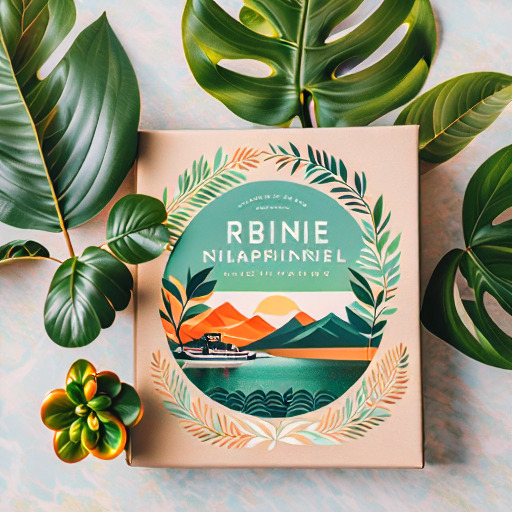
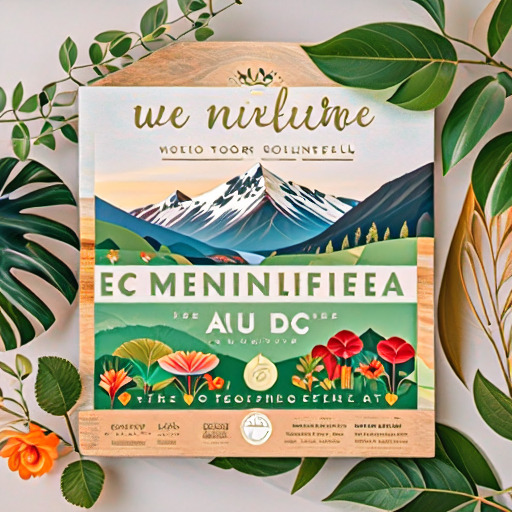
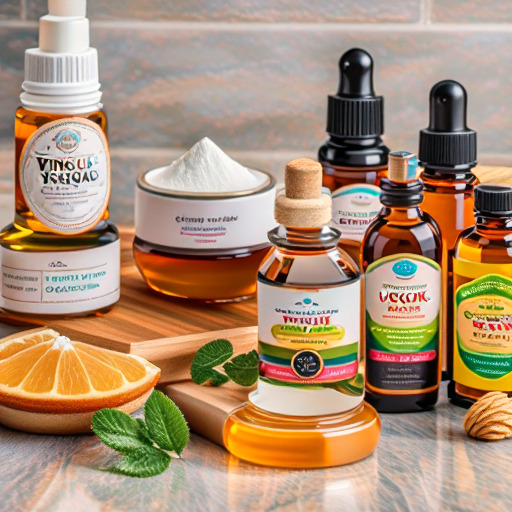


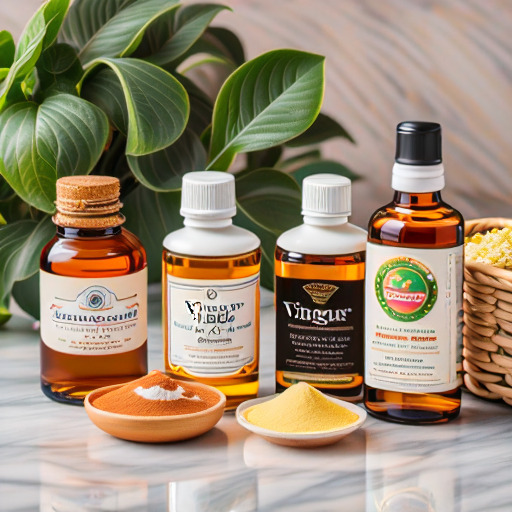



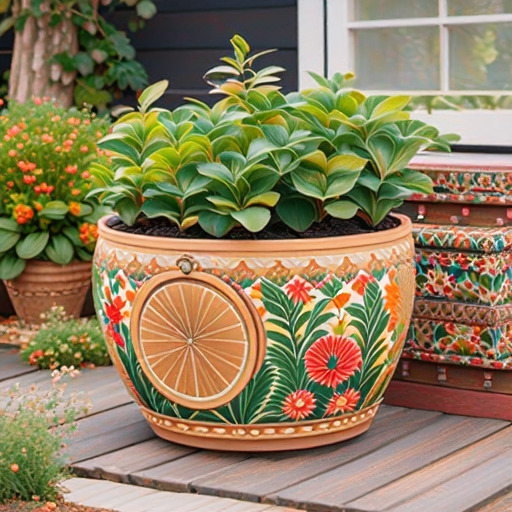
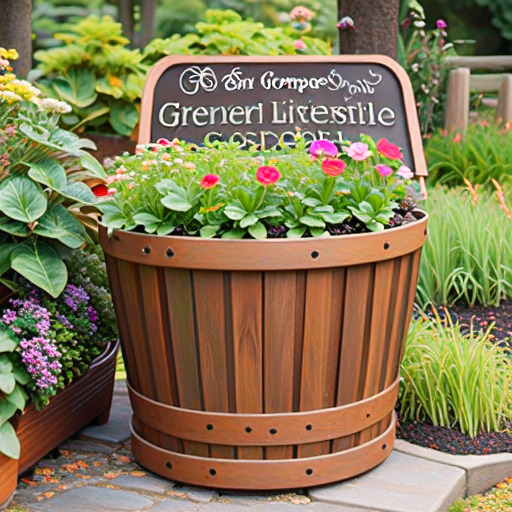

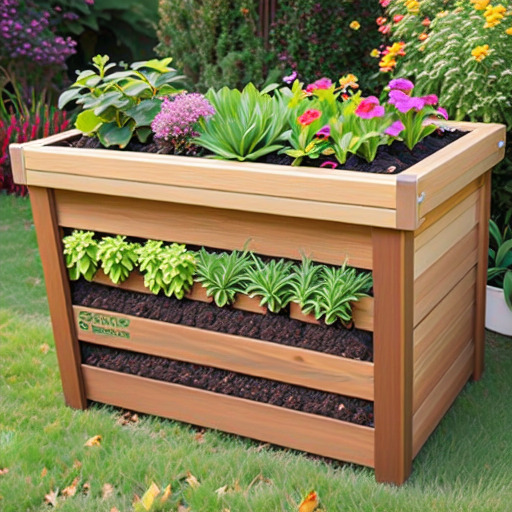
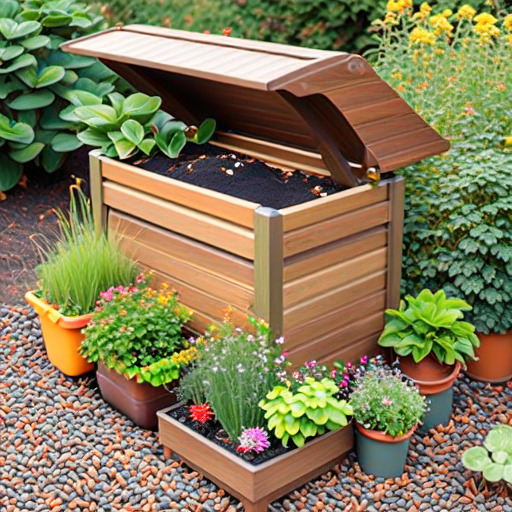
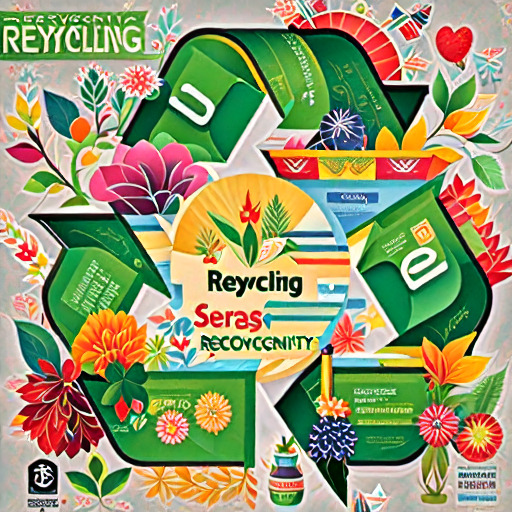
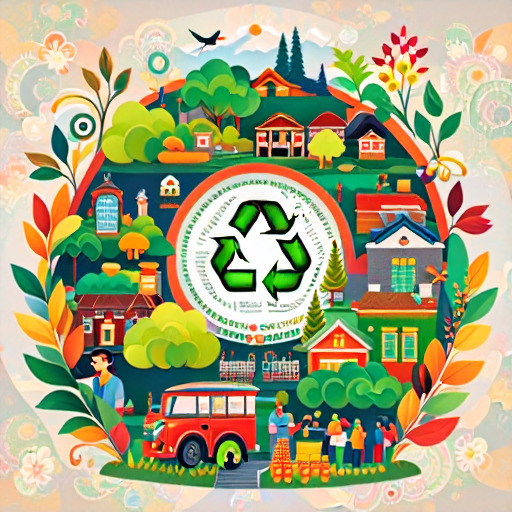
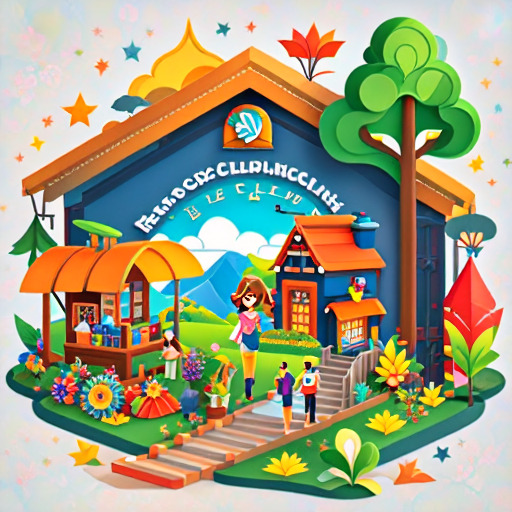
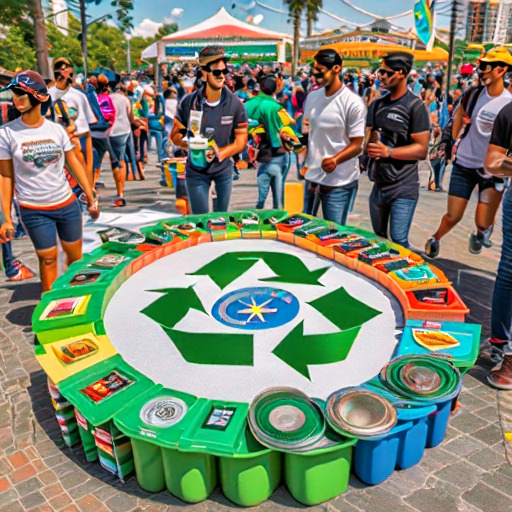

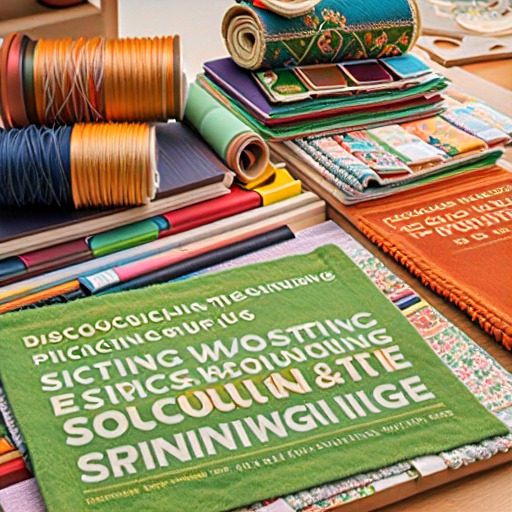
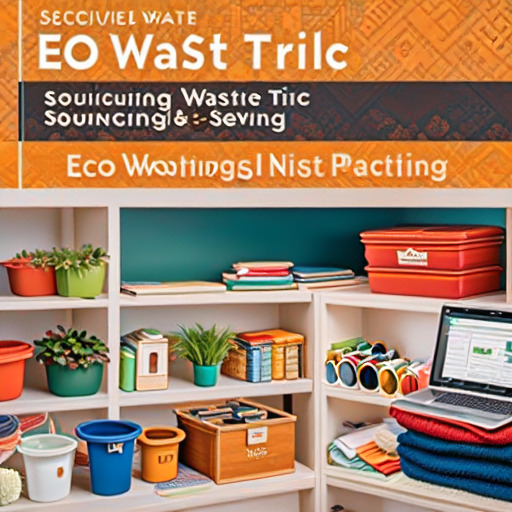
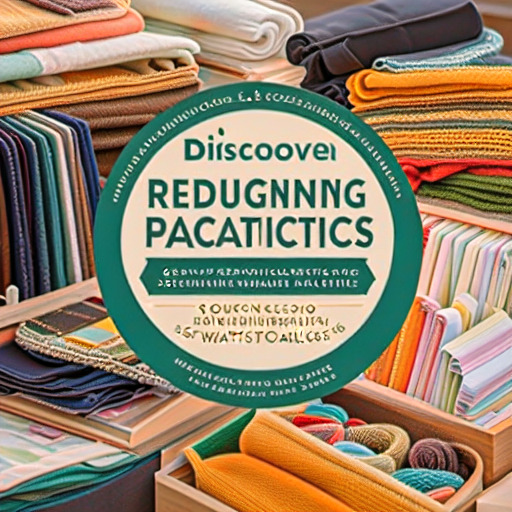
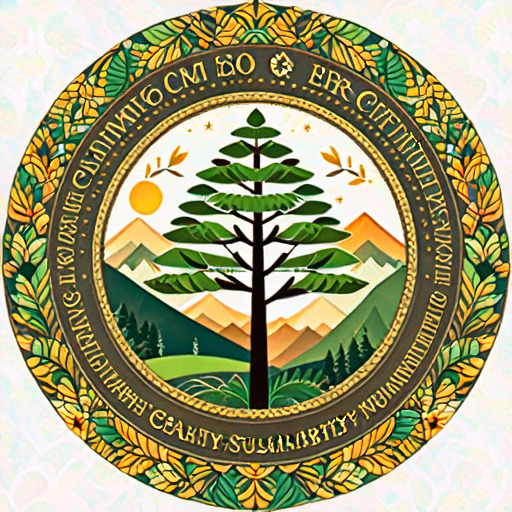

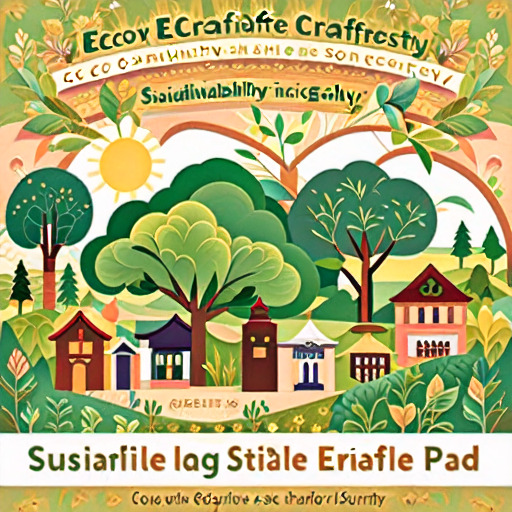
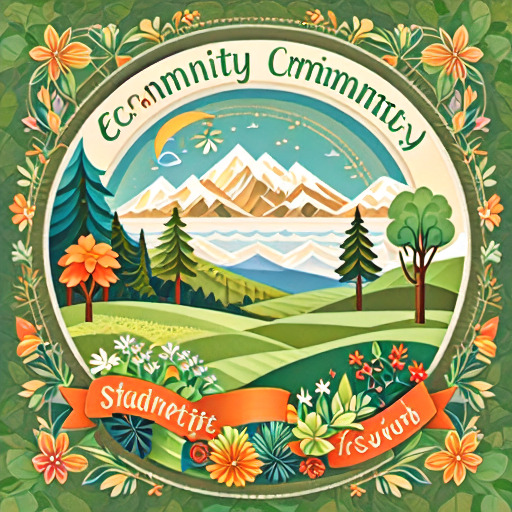
#greenliving#Zero Waste Wisdom#eco friendly products#DIY Sustainability#Garden and Outdoor Project#Creative Recycling Challenges#Tips for Sustainable Crafting#Community Collaboration and Support
0 notes
Text
I'm by no means an expert, but after studying and trying to practice sustainable living for the past month I have thoughts and questions.
Boycott Companies with Bad Practices I think is completely misguided. Those companies do not know nor care that you boycott their products. Support companies trying to do the right thing seems far more impactful. Refusing to buy that one deforestation-happy toilet paper brand will make absolutely zero difference. Buying that toilet paper made of recycled paper helps that business grow-- and maybe eventually compete with the deforesting brands. Same thing with Fair Trade and sustainable ingredients. Support those small businesses making a difference.
Plastics end up in the ocean is also misleading. The un-recyclable plastics that are properly disposed of in your trash can will go to a landfill, not the ocean. The issue seems to actually be with unnecessary waste taking up landfill space, chemicals released by degraded plastic, and escaping microplastics. Personally, just sticking a label on the trash can "DUMP IN LANDFILL" makes me reconsider what I'm throwing away, no turtles needed.
Buy reusable products but use less water and energy sometimes seems like you can't have both. You could buy paper coffee filters and contribute to paper waste or you could buy a cloth coffee filter and have to use extra water every day rinsing it out and build up coffee grounds in your sink drain. Instead of throwing out those paper towels, I'm rinsing the dishcloths. I actually really love my cloth menstrual pads but they need to be hand washed daily. These and similar products means I've been using a lot more water than before. Is it worth it? Probably, yeah, but I'm aware of the tradeoff.
Stop using paper towels and plastic wrap has been the biggest game changer for me. Tea towels, Swedish dishcloths, and beeswax wrap have ended my dependence on paper towels, and I haven't touched the roll of plastic wrap in a month. I've even dedicated a dishcloth to my watercolor painting.
Don't drive if you don't have to is great and I try to practice it as much as possible. If it takes half an hour or less to walk, and I don't have to haul anything, I'll walk. If there's a convenient bus or train, even better. But the public transportation is so bad around here that a trip that would take 15 minutes by car takes three hours by bus. Once I tried to take the bus to an appointment and it was so badly delayed I had to call an Uber to make it in time. I was an hour late to work once because my train simply didn't arrive. I am so lucky and grateful to have access to a car, and I have massive respect for anyone who has mastered the art of the bus schedule.
Recycling plastic bags and food wrap has massively reduced the amount of plastic I drop in the trash. It's insane how much store drop offs will accept. I use a backpack daily, so I just stuff the backpack with the plastic bags and wraps as I use them, then stuff them in the reusable shopping bag when I go to the store.
Recycling electronics has also been a recent amazing discovery. Staples specifically will take a ton of electronics-related stuff for recycling. This is stuff that's been sitting in my closet because I didn't know what to do with it. They'll even take dried out markers and batteries.
Buy used stuff is great-- my favorite bowls and mugs that've lasted forever were from a thrift store --but some things just shouldn't come used, like cookware and headphones. The next best thing is stuff that's made of sustainable materials, which loops back to supporting companies doing the right thing.
Think like a Vegan has also expanded my recipe repertoire. The horrors that animals endure plus the climate impact of livestock, compiled with actual health problems from eating meat is enough to make me consider how important that cheeseburger is when I actually really love letils and rice (in a tortilla with tomatoes and spinach with hummus and salsa). I do still occasionally have eggs and cheese, and will eat meat if it is given to me, but I've significantly reduced my meat intake and I think I feel better for it.
So, the verdict?
I've spent a lot of money in the last month. Sustainable and reusable stuff is expensive -- but then, I shouldn't have to buy any more of it for the foreseeable future. I've been very occupied planning trips and mapping bus routes and scouring local shops for carob powder (which has become an obsession to find, like a scavenger hunt) and in the process found some parks and theaters on convenient routes that I've never been to. Cutting a lot of the meat and animal products, especially switching to oatmilk, has totally resolved my bloating problems and I seriously feel like I have more energy.
Most importantly, at least for me, is that I'm challenging myself to do things in a different way, to have adventures I wouldn't otherwise participate in, and to be aware of the outside world. I'm not saving the earth by using recycled toilet paper. I'm not even saving a tree, technically. But I'm more aware of what has to happen to get these products into my hands, which is an awareness of the world's contribution to my little space. And that, I think, is worth the effort.
0 notes
Text
Sustainable fashion and the future of the Indian Garment industry
The fashion industry is estimated to reach 3.14 billion consumers by 2025 and be worth $987 billion in 2022.
With the rise of sustainability in today’s fashion industry, many retailers are ensuring their production systems adhere to various ethical standards.
It is becoming increasingly common for corporations to adopt sustainable supply chain management practices to mitigate social risks, especially when dealing with multi-tier supply chains.
The concept of sustainability encourages the recycling and reusing of materials rather than disposing of them. This coincides with Wikipedia's definition, according to which "Sustainability is defined as a 'way of life that seeks to meet human needs while preserving the Earth’s environment for future generations.”
How can a fashion factory implement sustainable supply chain management?
The first step is to ensure that your business has a strong sustainability policy in place and that all levels of management implement it. This will help create an environment where employees feel valued and supported, so they can take responsibility for their own actions when it comes to reducing waste or improving worker health and safety.
Once you've established this foundation, you can begin implementing initiatives on a local level within each factory location (or "factory house"). These should include things like:
· Compliance - Making sure that all applicable laws are followed by themselves, but also looking at social issues like workplace safety or human rights violations. This could include conducting audits of suppliers' facilities; requiring regular employee training sessions on topics such as health & safety standards etc...
Supplier development: Establishing a set of rules that all suppliers must follow (to ensure uniformity across all factories)
Communication practices Encouraging employees to speak up about issues within the workplace environment and providing training on how to do so effectively
Which compliances are important to the apparel industry?
· Business Social Compliance Initiative- An abbreviation of Business Social Compliance Initiative, BSCI provides the apparel industry with social auditing methodology and reporting will suggest the common code of conduct for multi-supply chain performance.
· SA8000- Clothing industry manufacturers that meet all BSCI requirements can apply for the SA8000 social management certification developed by Social Accountability International. The SA8000 certification is based on international standards to improve social sustainability standards for workers and the company.
· WRAP- Another necessary certification, Worldwide Responsible Accredited Production (WRAP) showcases individuals’ proof of social compliance in the apparel industry.
· The BSCI and WRAP are business-driven initiatives, initiated by industry associations while SA8000 is a multi-stakeholder initiated and developed standard.
The sustainable future of the modern fashion industry
The future of the fashion industry is not only about sustainable practices, but it is also about the consumers. From a global perspective, sustainability has become an essential part of modern fashion production and consumption. Consumers want to know what they are buying and how their clothes are made. They are looking for products that are ethical, fair trade and sustainable in nature as well as affordable prices so they can continue buying them without breaking bank accounts every time they go shopping!
In India too we have seen rapid growth in this sector over the last few years where many brands have started offering eco-friendly options such as organic cotton fabrics or recycled materials that do not involve any harmful chemicals during the production process like dyes used during the printing process etc., which ultimately leads us towards making better use of natural resources like water sources instead of using them up at faster rate than required elsewhere (like plastic bottles).
Conclusion
The Indian fashion industry has a lot of potential to become sustainable. However, it is important to note that this will take time and effort. It’s important for people involved in the industry to understand what sustainability means, how they can contribute towards it and how they can work towards this goal.
The key takeaway from this article is that sustainable fashion requires changes in consumer behaviour as well as an increase in production efficiency.
To know more information about Oxym Crafts visit us on:
https://www.oxymcrafts.com
0 notes
Text
SUSTAINABLE LIVING: SMALL CHANGES THAT MAKE BIG IMPACT
Technological advancements have taught us that, maintaining Sustainable living starts with doing all we can to protect the world. Going green is easier than ever as more individuals are committed to protecting the environment in whatever manner they can.
Committing to turning green is a key first step in protecting the environment, but where do you begin? Here are some quick ideas for leading a green life.
1. Make sure that your big purchases give considerable environmental benefits
Not everyone has the means to quickly trade their old gas guzzler for the latest eco-friendly hybrid car. It's also not always a negative thing because it uses a lot of resources to make new cars. If you're in the market for a new vehicle, search for a fuel-efficient model. You'll save thousands on petrol and lessen your carbon footprint over time. To identify the most energy-efficient appliances when buying a new refrigerator, washer, or dryer, seek the Energy Star label. A new water heater is required. Think about converting to solar.
2. Stop eating meat once a week
One easy change that has a big effect is giving up meat one day a week. It requires a lot of land, chemicals, water, and other things to raise animals. The resources required to produce meat for meals will be decreased if you decide to go vegetarian for a day. Choose ethically and organically raised meats on the days you do eat meat!
3. Make a note of the labels
There are many options available, from clothing to coffee, and some stand out as having the least impact on the environment. If you enjoy coffee, search for "shade-grown" types that are produced without destroying the forests' important homes for migrating birds and other animals. When buying products, look for Fair Trade certification to support businesses that value fair employment practices and sustainable production. When possible, choose organic foods; while they can cost a little more, they protect your family, farm workers, and wildlife by keeping dangerous pesticides out of your land and water.
4. Donate Your Unwanted Items
Does your house include a bunch of clutter? Donating unwanted items from your house rather than throwing them in the garbage is an environmentally friendly way to get rid of them while also helping those in need. Give away things like shoes, clothes, food, home goods, and more!
5. Green your home
Maintaining a healthy house increases energy efficiency, just as keeping a healthy car increases fuel efficiency. Use a programmable thermostat for more effective heating and cooling, proper insulation, energy-efficient windows, and, of course, energy-saving light bulbs for better lighting in your house. Many states now provide low- or no-cost incentives to help you green your house or rental. To find out if your energy supplier conducts free energy audits or is aware of a business that does, give them a call.
6. Buy only what you need
How often do you throw away food that you planned to eat but ultimately didn't? Planning your meals, using a list when you shop, and only buying what you need are simple ways to save money and protect the environment. To stop wasting your money away, commit to eating what you buy within a week.
7. Be water-wise
Avoid drinking bottled water. Even though the water from your tap is free and a lot of city water has outperformed name-brand water in taste and quality testing, bottled water companies still attempt to demonize tap water. Additionally, it is well known that the creation of plastic bottles and the extraction of water affect both humans and wildlife. The nation's water resources are under increasing pressure from our expanding population, and we frequently have droughts, therefore water conservation is important. By taking shorter showers, replacing leaking toilets, and selecting low-flow and low-water appliance choices, you can save water. Consider xeriscaping as well, a landscaping strategy that uses local, crop-failure plants that need less water and maintenance over time and offers habitat and food for birds and bees.
8. Choose Wild Energy
To save animals, slow climate change, and protect our lands and rivers, we must give up using fossil fuels. Use a Green-e-certified company that gets at least half of its power from wind, solar, and other clean sources if your state lets you choose your energy supplier. Explore your choices, including tax breaks, for adding solar water heating or rooftop solar panels to your house. You may be able to further reduce your carbon footprint by adding clean electricity to the grid, depending on your productivity.
Your daily routine and way of life don't have to change to go green; these little changes are a great place to start. To know more visit us at Chalo Green Products.
The article was originally posted on: SUSTAINABLE LIVING: SMALL CHANGES THAT MAKE BIG IMPACT
0 notes
Link
Check out this listing I just added to my Poshmark closet: Meet your Posher, Denise.
0 notes
Text
The Conscious Shift: transitioning to a more environmentally conscious and sustainable lifestyle
The world is quickly changing, and with it has come to a variation in human interaction with nature. The present global crisis has shown that the upcoming is likely to only bring more extreme changes to the way we aspect at the world. Therefore, switching to a more sustainable lifestyle is a great step in the right direction but there are more ways to live a greener way of life. More and more individuals are seeking ways to adopt an Eco-friendlier lifestyle in order to lessen their influence on the environment as a result of increased press coverage given to environmental issues and a growing cultural trend towards greener living. There are, of course, many ways for us all to contribute, but in today's piece, we're focusing on the basic goods we consume.
Sharing three easy product swaps you can do right away that will help preserve our planet.
instagram
Go local with Groceries
We are loaded with choices when it comes to food and beverages in today's supermarkets, with a wide assortment of imported goods and out-of-season items available from all over the world. In order to get these products on the shelves, however, there is a lot of transit involved, which results in unwelcome and needless carbon emissions. This is due to the broad preference for exotic foods and their year-round availability. However, you may lessen the carbon footprint left by your food shopping by using local produce wherever you can.
The carbon emissions associated with shipping locally produced fruit, vegetables, and meat will be reduced, and buying organic produce is better for the environment.
Switch to naturally extracted skincare products
In order to refresh and feel rejuvenated, skincare products are often an essential component of our daily routines for many of us. Microbeads and Parabens are two examples of ingredients that some products may include that are potentially harmful to the environment and human health.
Why not switch to natural skin care products instead to ensure that you are aware of what you are putting onto your skin and possibly into the environment? Natural beauty products could have a positive effect on the environment and be better for your skin. Examples include organic argan, rose hip, or tea-tree oil with its anti-aging effects and exfoliates made with natural grains rather than plastic.
Make Eco-conscious fashion choices
The fashion industry is an important contributor to waste collected throughout numerous landfills around the world. We have been producing more than we can consume and have been placing so much more than the earth can replace. When we make the switch to a conscious fashion brand it allows us to goal our relationship with waste. You capacity be thinking, what is sustainable fashion? The term discusses clothing that is designed, manufactured, distributed, and controlled in ways that are environmentally friendly and ethical.
instagram
Given how quickly these trends change, keeping up with the current fashions is no easy task. The first step in updating your wardrobe in an environmentally responsible manner is to be aware of where and how your clothes are made. Even if you do continue to switch up your wardrobe with each season, you can still choose to dress ethically. By substituting mass-made things for ethically created ones, you can raise the Eco-credentials of your wardrobe. You can do this by buying at fair trade retailers and stores that sell locally produced goods, finding treasures at thrift stores, or recycling old garments.
The sustainable fashion switch supports us to target our performance with waste and helps us gain a sense of gratitude for our planet. Waste is an enormous module of the fashion industry and by making the shift to more conscious fashion clothing we can lower our control on the planet significantly.
The transition to a greener lifestyle may seem daunting, but it doesn't have to be. The preservation of our planet can be greatly aided by constantly making, simple, and informed changes to your everyday choices.
0 notes
Text
one of my "special interests" in the past couple of years has been exploring fast fashion vs. slow fashion. it has been a long journey trying to find clothes that actually 1) fit me 2) look good 3) are made from material that is not actively shoving plastic in the ecosystem 4) involve ethical labor, fair trade, fairly compensated, etc
before i did this research, i really had no clue about fabrics or fashion brands. i used to think i had zero interest in fashion, in fact.
i grew up wearing walmart and thrift store clothes, and when i went to college i bought clothes from target and asos. something started to shift a little bit when i found vintage resellers on etsy and ebay... those clothes were so unique. but a lot of the vintage clothes were polyester blends, stiff, and would fall apart as easily as my asos clothes. i would leave them hanging in my closet and never wear them. i would wear the same old t shirts and jeggings every day. i felt like it was impossible to ever wear comfortable clothes, or ever feel good in clothes, so why bother?
it started with linen. linen is very comfortable and pretty sustainable. i was amazed that i didn't feel the urge to rip my clothes off when i wore linen. lightbulb number one.
a friend let me borrow a nooworks dress, and i went to the store and got some overalls. wow. overalls. lightbulb number two. holy shit, you can wear overalls. you know how people say "not binary or non-binary but a secret third thing." that's overalls.
i realized i loved the bonkers prints that nooworks had, and all of it was soft, and made ethically. it was a higher price point than i was used to, which gave me pause. but then you realize: we're not supposed to be buying dumb clothes every other weekend. and isn't a slightly higher price point for soft clothes that you won't want to tear off your body worth it?
so i started my research. i made a spreadsheet. the prices can be all over the place across brands, so i made a column for prices. sizes can be all over the place too -- people always ask me "where is the plus size slow fashion?" it's there. just look at the size column. people say "isn't it better to buy secondhand?" yeah, it is. i have many links to secondhand sources.
if you have any suggestions or additions please let me know, it is a living document.
28K notes
·
View notes
Text
“When I was 26, I went to Indonesia and the Philippines to do research for my first book, No Logo. I had a simple goal: to meet the workers making the clothes and electronics that my friends and I purchased. And I did. I spent evenings on concrete floors in squalid dorm rooms where teenage girls—sweet and giggly—spent their scarce nonworking hours. Eight or even 10 to a room. They told me stories about not being able to leave their machines to pee. About bosses who hit. About not having enough money to buy dried fish to go with their rice.
They knew they were being badly exploited—that the garments they were making were being sold for more than they would make in a month. One 17-year-old said to me: ‘We make computers, but we don’t know how to use them.’
So one thing I found slightly jarring was that some of these same workers wore clothing festooned with knockoff trademarks of the very multinationals that were responsible for these conditions: Disney characters or Nike check marks. At one point, I asked a local labor organizer about this. Wasn’t it strange—a contradiction?
It took a very long time for him to understand the question. When he finally did, he looked at me like I was nuts. You see, for him and his colleagues, individual consumption wasn’t considered to be in the realm of politics at all. Power rested not in what you did as one person, but what you did as many people, as one part of a large, organized, and focused movement. For him, this meant organizing workers to go on strike for better conditions, and eventually it meant winning the right to unionize. What you ate for lunch or happened to be wearing was of absolutely no concern whatsoever.
This was striking to me, because it was the mirror opposite of my culture back home in Canada. Where I came from, you expressed your political beliefs—firstly and very often lastly—through personal lifestyle choices. By loudly proclaiming your vegetarianism. By shopping fair trade and local and boycotting big, evil brands.
These very different understandings of social change came up again and again a couple of years later, once my book came out. I would give talks about the need for international protections for the right to unionize. About the need to change our global trading system so it didn’t encourage a race to the bottom. And yet at the end of those talks, the first question from the audience was: ‘What kind of sneakers are OK to buy?’ ‘What brands are ethical?’ ‘Where do you buy your clothes?’ ‘What can I do, as an individual, to change the world?’
Fifteen years after I published No Logo, I still find myself facing very similar questions. These days, I give talks about how the same economic model that superpowered multinationals to seek out cheap labor in Indonesia and China also supercharged global greenhouse-gas emissions. And, invariably, the hand goes up: ‘Tell me what I can do as an individual.’ Or maybe ‘as a business owner.’
The hard truth is that the answer to the question ‘What can I, as an individual, do to stop climate change?’ is: nothing. You can’t do anything. In fact, the very idea that we—as atomized individuals, even lots of atomized individuals—could play a significant part in stabilizing the planet’s climate system, or changing the global economy, is objectively nuts. We can only meet this tremendous challenge together. As part of a massive and organized global movement.
The irony is that people with relatively little power tend to understand this far better than those with a great deal more power. The workers I met in Indonesia and the Philippines knew all too well that governments and corporations did not value their voice or even their lives as individuals. And because of this, they were driven to act not only together, but to act on a rather large political canvas. To try to change the policies in factories that employ thousands of workers, or in export zones that employ tens of thousands. Or the labor laws in an entire country of millions. Their sense of individual powerlessness pushed them to be politically ambitious, to demand structural changes.
In contrast, here in wealthy countries, we are told how powerful we are as individuals all the time. As consumers. Even individual activists. And the result is that, despite our power and privilege, we often end up acting on canvases that are unnecessarily small—the canvas of our own lifestyle, or maybe our neighborhood or town. Meanwhile, we abandon the structural changes—the policy and legal work— to others.”
– Naomi Klein (x)
59 notes
·
View notes
Text
Okay....

I went reading up🙄
The things yall make me do😐
So....
1. The Fair Trade commission is the institution mandated to enforce the Fair Labeling Act.
Makes sense.
2. I tried to find case law on this to see how similar cases were decided and it's ratio decidendi and the only case I found was an intellectual property case where the defendant claimed he owned the original patent to a type of sensor common on the market. The commission ruled their advertisement was highly exaggerated and thus violated the Fair labeling Act.
From the ruling it seems one of the requirements to prove a violation of the Fair labeling Act is to prove whether or not the act or *omission* influences or is likely to influence a consumer's rational decision making in regards to the good- among other things.
Keyword being rational.
In the case above, claiming you own an original patent to a tech is likely to induce a customer to patronize your services to the disadvantage of the other company selling similar goods or tech.
In Jk's case, I guess the question of law would be whether or not his omission- not informing the public about his stake in the company- would have stopped consumers from buying his shirt and instead bought from other companies.
If it would then his actions would amount to deception...
But I think people would have bought those clothes regardless and would have even increased the number of sales in this case.
These people are jobless. Really.
I hope JK sues for defamation when all this is over.
To think for a moment I was actually worried he might have done something really really wrong grey area😭 I need to sue netizens for emotional distress and false alarms.
I want to know what the commission would have to say on this. If he violated any provisions I want to know what and why.
I'm a little worried because he's on record for saying he's well aware the Influence he has and how he's helping small businesses stay in business in the pandemic with the exposure he gives them.
If it turns out you pushing your own brand all along then sir that's.... Jeikei😭😭😭😭😭

Lord help my man's man if he about to be busted for fraudulent misrepresentation 😭
I still don't know for his standing with BigHit and whether or not his actions is a breach of his contract especially with all these high end fashion brands they have under contract.
I feel stressed out already.
Please leave my man and his coins alone we are saving for my bais's wedding suit😭
GOLDY
39 notes
·
View notes
Text
i wrote another fic about generational trauma and the winchesters, this time featuring deadbeat mom extraordinaire mary née campbell, displacement, emigration, the american wake and just really missing your mom.
gonna quickly tag a few mutuals who might be interested but also you can find the fic under the cut
@uhuraha @myaimistrue @nonsensegnomes
American Wake
On a mild summer’s day in 1950, a wedding took place in Normal, Illinois. Dressed in a simple white dress that she had inherited from her mother, Millie Walsh looked up at the man who was to be her husband in daze of transcendent happiness. She had good reason to be besotted. His name was Henry Winchester and he was a dashing young academic of the supernatural with a fascinating air of mystery that surrounded him. They had met the previous year when he had come to her home in New York on a fact-finding mission. Millie fell in love after only two minutes of conversation.
With such a buoyant adoration to carry her through, Millie was perfectly happy to relocate to a state far from her family and friends to build a new life with charming debonair Henry. She knew about the supernatural elements of his life. How could she not? But it was a trade she was perfectly willing to make for the opportunity to create a family with him.
And she paid dearly for that decision. Millie lost a husband and was left to raise her four year old son alone.
It was all entirely avoidable of course. The Winchester name was not her inheritance by birth. No Cupid had ever marked her name for Henry. It was by no means a match made in heaven. If not for love, Millie could have lived a life completely divorced from the less-than-natural.
After her husband’s disappearance her heart hardened and she abandoned the Winchester name and any association with the supernatural. Packing her bags for Kansas, she returned instead to the ways of her own people. For Millie’s family had a long history of leaving their pasts behind them.
--------------------------------
Millie’s maternal line can be traced back to a small town in Limerick, Ireland now known by the name of Patrickswell. The farm where her grandmother was reared would likely have been a fair few miles from the town itself but it’s difficult to be precise about these things since many of the records of the era were destroyed in an explosion during the Civil War of the 1920’s.
Bridget Ó Laochdha lived in a hard place surrounded by tough people. There was no work in the surrounding towns and villages and her family was forced to eke out a living on rented land. Most of the local community spoke little to no English and spent most of their day-to-day lives conversing and working through the medium of the Irish language.
The Ó Laochdha family was no exception to this rule. Bridget - as the sole member of the family with more than a rudimentary grasp on the foreign tongue - had been translating for her father at the market for most of her young life.
The rugged countryside that surrounded them was austere and beautiful but there was darkness around every corner. Violence engulfed the region as the Land War raged around them. The threat of eviction was a constant sword of Damocles over their heads and the precarity of the political situation left a permanent mark on Bridget’s development.
Bridget loved her family, of course she did. She loved the language she spoke with them and the easy rhythm of her life. But she knew that there was a brighter future out there somewhere on the other side of an ocean. Somewhere she wouldn’t hear constant news of Whiteboys, Invincibles and their clashes with the police. Somewhere that was safer, where she might get a job and support her family from afar. All she needed was the means to get there.
------------------------------------
Mary idolises her dad when she’s young as children are prone to do. Her family are heroes who straddle the line between the known and the unknown and keep the world safe from the evil lurking in the shadows.
As a teenager, she joins the family business and she’s a natural. She excels particularly at getting information out of young witnesses. She sits amongst small groups of girls, nodding along to conversations about music, miniskirts and make-up and nudging the topic of discussion slowly around to the subject of her father’s latest hunt. Mary’s good with the guys too, she finds that a well-placed laugh or look can get her most of what she needs.
But intel is not the only area where she excels. Mary’s a sharpshooter and she’s not afraid to get her hands dirty. Hand her a shovel and she can dig a grave just as fast as the boys. She even knows the best technique for washing blood off her hands.
She’s on a path to be one of the best in the business. And she hates it.
-------------------------------
Although many people left Ireland to try their luck in the United States in those days, it was still a difficult path to tread. Tickets to get to New York were expensive and hard to come by. Buying a ticket at the harbour was as likely to get you scammed as to get you a place on the boat.
Bridget was fortunate in that her local parish priest was looking to sponsor a few young hopefuls on the trip across the Atlantic and offered her a place. That decision might have been the hardest any in her family had ever had to make. To leave behind everything she knew and understood for the small chance that her life could be better. She made that choice nonetheless.
The tradition of The American Wake was one that dated back to the famine years in Ireland to mourn the departure of a loved one to that far off place across the ocean. There would be no real way to send letters home consistently and economic conditions meant that the emigrants would likely never be able to return home. What do you do when you are setting up to grieve someone who is still alive? You hold a funeral.
On Bridget’s last day in Limerick she cried until her tear ducts ran dry. She sat in the centre of the room and listened to the keening women wail around her. Her father could not speak his sadness but he stood beside her and rested his hand on her shoulder, bowing his head in silent prayer. Her mother held her face in her hands and whispered one last goodbye.
Yet amidst all of the tears and the heartache, a sense of relief made its way into Bridget’s bones and settled in her spine. There was death and loss but a future there too. A brand new life in a brand new land. And while they’d never say it, her family was relieved too, she could see it in their eyes. This was one less mouth to feed, one less person to clothe. The money she will send home in remittances would lighten her father’s load by a considerable degree.
As she boarded the boat in Cobh, she stared at the ticket clutched tightly in her hand and thought not of what it had taken from her but of the life it stood to grant her.
---------------------------------
When Mary meets John for that second date outside his mother’s house, she knows that this is it. That he is her ticket out.
She clutches his body in her lap and cries and she doesn’t know what to do. With death and destruction all around her, Mary makes the only choice she can.
Deanna’s body still lies abandoned on the kitchen tiles. But isn't it better, in a way, that she never had to face her daughter leaving her behind?
------------------------------------
The first impression America made on Bridget was not a positive one. No sooner than she arrived at Ellis Island, did they take the last vestiges of her home away from her. Bridget Leahy took her first step onto foreign soil without even her name to console her.
Her first job in New York was that of a kitchen worker in a large airy home in the employ of a family belonging to the upper echelons of East Coast society. Her hours were long and her fingers near scrubbed to the bone. Since her food and board were covered, every penny that she earned was sent home to Patrickswell.
While her English had served her well in local markets of Limerick, she found that they were quite inadequate here among native speakers. She sat around the table in the servants’ quarters with the others who worked in the home and listened as conversations happened all around her. They all spoke so fast and the topic of conversation switched so quickly that she couldn't quite keep track. Bridget simply did not have the vocabulary to contribute and so she stopped speaking entirely.
The longing for home was like a physical wound lodged just under her ribs and sometimes she wondered how she continued to breathe through the pain.
The only times that she could recognise herself was on her rare evenings off when she made her way down to the local Irish dance hall. There she could allow young men from Inchicore, Kilrush and Listowel to spin her around a room to the music of home and forget where she was for just a few hours.
--------------------------------------
It is impossible to overemphasise how little the role of a housewife suits Mary Winchester. The sundresses feel awkward on her form and the kitchen still feels like a foreign land.
The other mothers in the neighbourhood all seem to speak the same language as they switch tracks fluently between complaining good-naturedly about their husbands and swapping recipe cards. Mary has never felt more out of place.
She doesn’t know where she fits or how to contribute. The loss of her mother is like a crater in her chest and she doesn’t know where to lay down all of the grief she holds in her hands. She thinks she would be better at holding her children without it.
When it all gets too much, she sheds the skin of Mary Winchester and leaves her small family behind to retrace the Campbell path. She might not be able to get her family back but she can pretend to be home for just a small while when on a hunt.
-----------------------------------
In a small catholic church on an intersection, Bridget Leahy married Mick Walsh of Tyrone in a small, private ceremony. As a married woman, she left the world of employment behind and started the task of homemaking in their small Manhattan apartment. She did her best to keep the rooms aired out and clean but the grime of the city was ever present.
When she looked out of the window and saw grey dusty streets she couldn't help but compare the view to green fields and the fresh air of the Limerick countryside. Her husband worked in construction, building monuments of steel to the sky that looked towards an American future while she remained stuck in an Irish past.
When Bridget’s pregnancy first became obvious to the couple, they were delighted. This was their chance to build something of their own on American soil. A family.
When her waters broke, the women of the neighbourhood rushed into her room to oversee the birth and refused to let her husband in so he could hold her hand.
In another life maybe Bridget stayed at home and married a local boy in Patrickswell. Maybe she gave birth at home next to her parents’ fireplace with all of the women of her family around her and her mother stroking her hair.
Maybe she was destined to die in childbirth no matter where she was but at least at home the last voice in her ears would have been in a tongue that was her own.
-------------------------------
Just like Millie Winchester née Walsh before her, Mary Winchester let the supernatural into her home in a desperate grab for the life that she wanted to build.
And just like her mother-in-law before her, a demon crashed through the walls and destroyed every semblance of a family that she had found.
#spn#mary winchester#i can make up backstories for all the grandmothers in spn just you watch#ill do something for the milligans next (not really)#anyway seriously to my mutuals no pressure if you don't like it#it posessed me to write it but i couldn't tell you if it was good or not#also i had to pare my writing down for the dean one bc i know next to nothing about coal mining in kansas#and i was trying to mask that#while i know just enough to be annoying here#emmigrationnatural
34 notes
·
View notes
Note
Oooh for the bingo card can I pick survivors guilt with dick feeling guilty cause he ran away from home just like Jason but he lived while Jason died 😢
ahhh sorry this took awhile to get to!! i hope you enjoy this though~ requested for my Bad Things Happen Bingo ; it is also on ao3
Survivor's Guilt
The days bleed into one another to the point where it’s almost offensive, how indistinct and indiscriminate each sunrise and subsequent sunset is. A little boy died and the world carries on like nothing happened. Like his life was nothing less than the lawn being mowed or a tree being cut down. Is there an analogy Dick’s forgetting about, comparing dead children to nature? He’s not sure, he’s just tired, and the days continue to bleed into one another.
Monday is actually Thursday and Dick looks in the mirror and traces the bruise on his face. There’s a line in the fading purple blob that’s just the slightest bit darker. Knuckle indents. He saw it coming but he didn’t do anything. It was… just a punch. He applies some ointment and looks away. A little boy died and he’s still taking care of a tiny little injury, hardly an injury, it’s nothing, it’s nothing, because-
It’s four in the evening and Dick just woke up. It’s not a good habit to fall into, to sleep so late, do so little, think about dead little boys and missed funerals, but Dick can’t help it. Sometimes, he loses time within the bleeding days, just sits down for a moment and then an alarm goes off to remind him that it’s morning now and that he should be getting up to do… something. Go somewhere. Take care of things. But what? But what? Dick only just sat down, it doesn’t seem fair for the world to demand he be pulled this way and that when it already took a child, already took someone that never graduated tenth grade.
What do people learn in tenth grade? They’re just children, and Dick can’t remember much from his Gotham Academy days, so he really hopes they aren’t put under too much pressure. They’re all just so young, tenth graders, so young and youthful and there’s really no reason for them to be bogged down with work or stress from education. Life was infinitely more important than some late homework and Dick wonders if the school requires missing assignments from dead children. Wonders what they do with that extra, empty desk or the absent name on the roster. Wonders if they just shove another kid into their place, cross out the name for attendance, and carry on like the rest of the world seems to have.
What’s more, what do the friends of the dead child do? Do they mourn? Mourning seems so sad for the young, it's got no place in their view, and yet Dick remembers mourning, grieving when he was just nine but it was all so wrong. Dick hopes that the friends of the dead child are okay. Dead child. Dead little boy. Dead tenth grader.
He heard the funeral was nice. Heard that the school hosted a vigil. Of course, he wasn’t able to attend. Wasn’t extended the invitation to attend, but it’s not about him. It’s about the dead boy.
Dick has never been comfortable with children. Not in the sense that he finds them strange or annoying or that he can’t stand youth. He’s just not comfortable with the sheer light, with people who possess so much of it that it literally oozes out in all the things they do. Leaks out from their innocent smiles, their troubled and off-handed questions, their zest for adventure, yearning for dreams so much larger than themselves, their endless compassion for others, their infinite amount of crushes, their worry about deadlines and asking someone out on a date, their constant need to keep up with trends of the day; so many light things that Dick hasn’t touched in so long. So many things he feels like he shouldn’t be allowed to touch.
You were lucky.
Was he? Dick doesn’t think he was, but then again, he’s not a dead little boy with a specially made coffin to fit his small, under-developed, never got the chance to reach a growth-spurt, body. Being Batman’’s partner was terrifying. He remembers it being scary, not knowing if he was going to live through the night or if Batman was going to go off on another rampage because Dick screwed up. Not knowing if screwing up as Batman’s partner meant no longer being welcomed as Bruce’s ward.
How many times has it been now? Twice? Three times?
A key is gone from his chain now and its missing weight burns holes in all of Dick’s clothes. It’s a finality that feels just as permanent as the dead little boy’s gravestone.
A size six and a half pair of sandals sit on the edges of Dick’s tiny balcony. He has a no shoe policy in his apartment, hardly cleaner than the streets below, but it was the principle that counted right? No muddy boots, no dirty sneakers, no rain logged socks, none of that. So Dick keeps a pair of size six and a half sandals on his balcony in case a size six and a half wearer decides to waltz in.
Dick wears a size eleven.
He’ll have to get rid of them at some point. There’s no reason for them to stay there, collecting dust or peeling away whenever it rains. They weren’t even that good of a pair, just some knock off brand he found at a convenience store once, so keeping them for their worth isn’t that important. He spent the entirety of seven dollars on them, so really, he’s not strapped for cash and he can’t wear them himself and he’s sure that some homeless kid or anyone really would be happy to have them. He could just donate them, throw them in a box and leave it outside for the trash to pick up. He could. He could.
He can’t.
They aren’t his. They belonged to someone, someone very important, and he can’t just throw them away. You don’t throw away a dead little boy’s shoes just because they can’t wear them anymore. His parents always taught him to respect the dead, respect their belongings, and those sandals aren’t his so he’s got no say in what to do with them. It’s fine if the dead child’s shoes stay out on Dick’s balcony. It’s fine. He doesn’t go out there much anyway. The shoes are so tiny, only a size six and a half, and Dick can hardly get half of his foot in a size so small and they belong to a dead boy anyway so he shouldn’t touch them. Shouldn’t touch the dead child’s shoes.
He’s distancing himself on purpose. It’s a lot easier to say a dead little boy, a dead child, than it is to admit a name belongs to such a ghastly title. There are so many other words, so many other titles infinitely more fitting for a child than dead, and yet it’s the only one that describes him in this moment. Dead. Gone. Passed.
There used to be a box shoved away in the back corners of his closet. A cramped and banged up cardboard box containing every memory he had from being Robin. There used to be a picture of his parents in there, a cracked glass frame and a stained photo all he had left from Haly’s; there was his old costume from the circus, the same one he wore on the night where the sawdust turned black and he learned what sounds a body makes when it hits the ground; there was a small photo album in there too, pictures Alfred took of Dick’s time at the Manor, of his time as Bruce’s ward. Sometimes he’ll flip through its pages and feel that sting in his eyes, feeling the ghostly fingers of longing cradle his head through each memory every pristine photo contained.
And, most importantly, in that old, worn out, and beat up cardboard box, was Robin. Red, green, and yellow. Shorts and a velcro cape. Boots he doesn’t know how he ever fit into. A vest that would be impossible to get around his shoulders now. The crest, the emblem. Robin.
It was supposed to stay in that box. Remain there for the rest of his days, leave behind a child soldier and trade it out for a freelancer looking for a new war to fight. A new landscape to reshape and hone as his own. But then another little boy, taller than when Dick started out, appears in the night and leaps and frolics and laughs by Batman’s side. Stands over Gotham and gloats and jeers and grasps Robin almost perfectly.
And for the first time, Dick understands the horror that plowed into every other superhero out there when he first debuted as Robin. Understands the numbing terror of the thought of a child, someone who probably didn’t know how to do calculus or read Shakespeare or tie their shoes correctly, out there fighting the dirtiest and darkest sides of the world. That someone with a shoe size of six and a half was out there punching rapists, getting up close with drug lords and traffickers, witnessing and investigating crime scenes and analyzing gore and blood spatters.
Just a child. Just a little boy.
It feels wrong. So, so wrong, to give his blessing to someone who’s just barely hit puberty. Who’s still struggling to perfect a Robin cackle or speak without his voice cracking and pitching wildly. It’d make him a hypocrite not to though. He was younger, so much younger, when he started out as Robin, so who is he to stop an almost teenager from being Robin?
Well, actually, Dick is an adult. His frontal lobe is completely developed, he can pay taxes, drink, vote, organize his own affairs, drive, buy cigarettes, make his own decisions. Help others make decisions. Jas- the dead boy was just that. A boy. He had no idea how to do any of those things, much less think about them for the next few years, so how can he just allow a child to decide if they want to traumatize themselves, bleed themselves dry, for a city that doesn’t love them and devote themselves to a man’s mission that hasn’t changed in over a decade?
But even if he hadn’t given his blessing, the boy would have been Robin anyway. Remember? Dick has no say in anything to do with Robin. Anything to do with Gotham. No, all that was taken away the moment he stepped out of line, stepped out of the conformity and obedience Batman demanded. The blessing… it was just a formality for something Dick had never wanted to continue. Robin was supposed to disappear with him, die with him leaving Gotham, and yet…
Robin died anyhow.
There’s a dead little boy that used to be named Robin buried in a cemetery with a beautifully carved gravestone that just wanted the child to rest in peace, sleep well, and dream of a better life. And Dick gave his blessing for him to die as Robin.
The days still bleed into each other, melting and drifting over and mixing until the sunrises and sets in the same minute. Dick keeps losing time and people keep calling him but he just forgets to pick up the phone to answer. He can’t help but stare at his balcony, can’t help but stare at the empty space in the box, can’t help but listen to his own heartbeat and watch the way his chest expands as his lungs do.
He is alive. Alive when he probably shouldn’t be.
Robin was not meant to last. Dick has told himself that over and over again, the clear and simple fact that Robin was not meant to carry on. Born through the same circumstances as Batman, Robin was supposed to be nothing more than a temporary outlet but Dick got addicted and now he can’t stop. Now his thoughts loop around and around and all he can think about is a dead child wearing his Robin uniform and running out in the night with his blessing.
You were lucky.
Bruce was right. He was lucky. Lucky beyond belief that he survived being Robin. Lucky he stuck around long enough to learn what he needed to and then some under Batman’s tutelage, only to be fired and leave a gaping hole behind that was just calling for a replacement. Screaming for someone to fill the void, beckoning the ears of the young and naive to answer its call. Of course a child would answer. Of course someone eager and looking for love and praise and meaning would find their way there.
And perhaps Dick used up all the luck, all the magic, Robin gave. Used it all up and without a care in the world for who would be next to wear the cape, parade the emblem, because now there’s a dead little boy in the ground and his blood stains Dick’s hands.
Maybe if he had died as Robin instead, died in those early days where he was nine and filled with moxy undeserved, it would have served as warning enough to stay away from Batman. Stay away from Robin. Stay away from the beckon of being a child soldier. And, really, it wouldn’t have been all that bad if he had died so young. If he had died after Zucco was found because then he would have been with his parents, would have been reunited with his family again.
Dick isn’t sure he believes in the after life, if there are places like Heaven and Hell, but sometimes he hopes there is because there is a dead little boy in his arms and he is desperate for the hope that he has a good place to go to. To move on to.
But Dick’s not dead, still very much alive and breathing through working lungs with blood pumping through his veins, and now he’s not only outlived his time as Robin, but the next as well. He has outlived a child.
How do you outlive your own legacy?
He can’t call the dead child his brother. They’re not, legally, and Dick didn’t bond with him like brothers should. He tried, tried to after the initial shock and horror, bought size six and a half sandals, helped with homework, lent an ear to vent to, but it wasn’t enough.
Somehow, a dead little brother is so much worse than a child and Dick can’t give him another title to cling to. Can’t assign another name and still…
Jason is dead. Dick missed his funeral, missed it all, and his name is Jason Todd and he was only fifteen when he died and god, Dick wishes he had been a better brother. Wishes so badly he had never given his blessing, never lived through being Robin, because that would mean Jason would have never had to die and he would be in Dick’s place, simply breathing and alive and that’s… that’s all he can ask for.
The days continue to bleed into each other and the bruise slowly fades away into his skin.
The sandals remain on the balcony.
#bad things happen bingo#survivor guilt#Dick Grayson#Jason Todd#Jason Todd is Robin#Robin#Nightwing#tw: canon death#i posted this same thing earlier but i thought i lost the ask for it#turns out it was just buried#fanfic#my fic
37 notes
·
View notes
Text
A Beginner’s Guide to Saving Money
Saving money is not always easy. It takes a lot of discipline and self-control to resist the temptation to spend money.
The first thing to do is track all your expenses for a month or so.
This will help you figure out how much money you’re wasting each day on things that don’t really matter to your life, like takeout coffee or snacks from vending machines.
This article will explore some of the ways you can save more money by making small changes in your daily life and habits.

Why is Money Management Important?
One of the most important things you learn as you grow up is how to handle money.
Money Management is important because it helps us be in control of our money, and it helps us make the most of our money.
We can use our money to buy things we need and want, and we can also save our money so we have something to fall back on if we need it.
You can think of money like a pie.

If you only have a small piece of pie, you won’t be able to have as much as you want.
This means not spending all of your money on things you don’t need, and saving some of your money so you have it for later.
People who are good at money management skills are able to achieve financial goals such as buying a home or retiring comfortably.

Money management also requires discipline and patience, as it can often take time to see results.
Those who are successful at money management are typically good at planning ahead and are comfortable with taking risks when necessary.
How do I save money?
Saving money is an important part of your financial plan.

It can be difficult to know where to start, but the following are some ways you can save money:
1. Save automatically
Automatically put a certain amount of your paycheck into a savings account each month. This will help you build up funds for emergencies.

2. Set a spending limit
Set a monthly budget and stick to it. This will help you avoid impulse buys and overspending.

3. Plan ahead
If you know that your car needs new tires in the coming months, buy them now when they are on sale instead of waiting until they need replacing and prices go up.
Consider what purchases you will make in the future, and when it is best to buy them.
4. Replace expensive subscription service
Cutting down on unnecessary subscription service such as:
Streaming services: Netflix, Hulu, Amazon Prime Video
Music streaming: Spotify, Apple Music
Magazine subscriptions: Vanity Fair, Wired
Food delivery: Blue Apron, Hello Fresh
Services like Netflix, Hulu, and Spotify can be canceled. If you’re not using them at all, cancel them immediately.
This will help you save money and avoid unnecessary charges.

6 Secrets of Frugal People
Frugal lifestyle is not about being cheap or miserly. It’s about getting the most of what you have, for as long as you can.
These are six secrets to frugal living:
1. They take care of their belongings and buy quality items
Whether it is a car, a home, or a piece of jewelry, people want to make sure that their belongings are in good condition and are worth the money they paid for them.
Taking care of belongings can also help maintain their value so that they can be sold or traded for something else down the road.
2. They Buy in bulk to Save money and time by shopping smart
Instead of buying a bottle of water every day, buy a pack of water bottles and store them in the fridge for later use.
By buying items that are commonly used in bulk, they are taking advantage of discounts that are typically offered to those who purchase more than one item.
3. They buy what they need, not what they want
Shop Smart, Compare prices and only buy what you need.
Shopping using Coupon. original source from tlc uk
4. They are creative, use things in unusual ways or find cheaper substitutes
Selective about the brands they purchase from, often buying second-hand or on sale to save money.
5. They regularly clean their homes and cars to make them last longer
And use less energy and water when washing clothes or dishes by hand, which saves them time and money in the long run as well as energy, water, detergent, etc..
6. They use up what they have before buying more
This includes food in the fridge or pantry that is nearing its expiration date.
What is frugality?
Frugality is a lifestyle that values spending less and saving more. It is often used as a way of living that saves money, time, and resources.
It is the opposite of being wasteful with one’s time or belongings.
Frugal people are not necessarily cheap or miserly; they are just conscious of what they spend their money on and how much they spend it on.

How do I spend less?
You might have tried cutting back on your grocery budget and eating out less, but there are more ways you can save money.
One way to spend less is to use cash instead of credit cards or debit cards.

This will help keep track of your spending habits as well as make it more difficult to overspend.
This way you can avoid paying high interest rates and fees.
Another way to save money is by using coupons and discounts when shopping online or in-store.

There are many sites that offer coupons for stores and restaurants, all you need to do is search for the ones that work best for you!
Lastly, Take a look at your current spending habits and see if there are any areas where you can reduce your spending.
If some of the items on your list are necessities, then try to find cheaper alternatives that will still do the job.
How do I cut back my spending?
You might be wondering how you can cut back your spending. There are a few tips that can help you out.
1) Figure out what you spend your money on the most
Identify what you are spending money on. This will help you find areas where you are wasting money and where you can cut back.
If food is a big expense for you then try cooking your own meals instead of eating out all the time or buying expensive groceries.
2) Try to reduce or eliminate the things that you spend the most on
You can also try swapping out expensive habits like going to the bar with friends for cheaper activities like playing board games at home or going for walks outside.
Next, look for ways to save on everyday items like groceries or gas by shopping at cheaper stores or using coupons when possible.
3) Take a look at your budget and see if there is anything that can be cut down or eliminated
Keep track of your spending.
You can do this by keeping a budget, or simply noting down what you spend during the week.
This will help you figure out where you’re spending too much money and how much you’re spending in general.
4) Eat out less
Try to cook at home more often, or eat out at lunch time instead of dinner time.
5. Get discount while go grocery shopping
Try to find discount using app from your phone while grocery shopping to avoid impulse purchases that may not be necessary or healthy for you (e.g., junk food).
Key Takeaway
Hope this will help you stay disciplined as a noob for money with your finances and avoid unwanted debt, which is vital for anyone looking for financial stability.
Take a look at our collection of articles for money, if you’d like to learn. Cheers:)
If you have any questions or suggestions about money noob guide, please feel free to leave your comment below.
4 notes
·
View notes